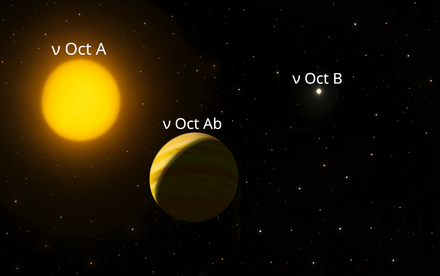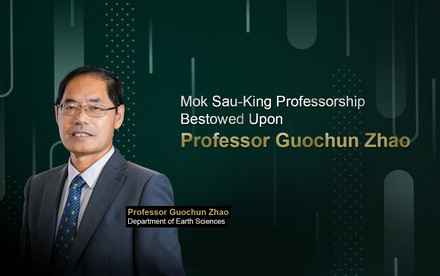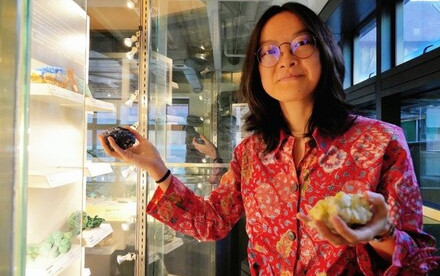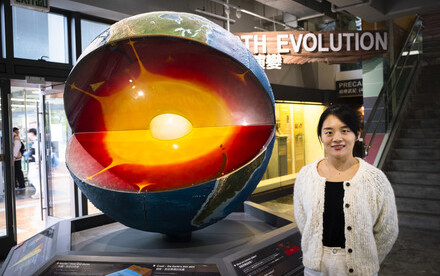23 Sep 2024
Ancient Volcanic Emissions Reveal a Climate ‘Tipping Point’ for Ocean Deoxygenation
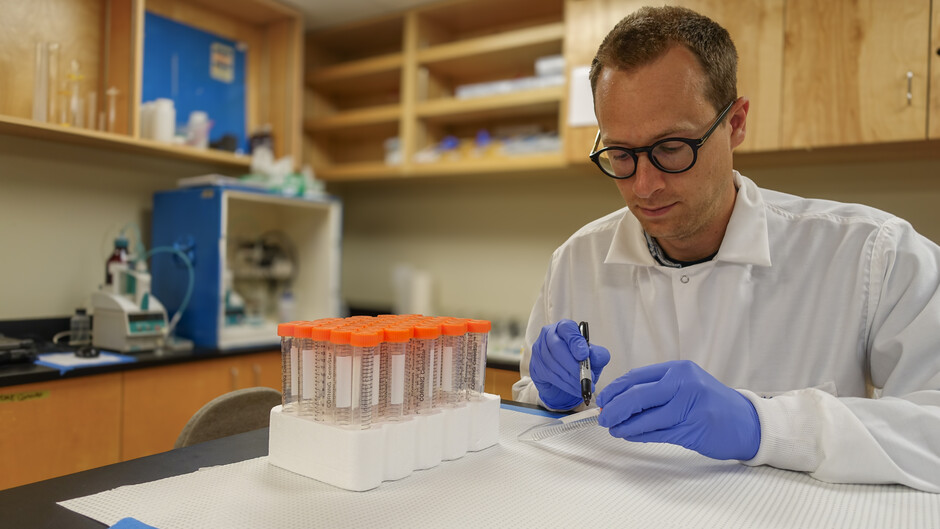
New research led by Dr Kohen Bauer, who began the research at HKU Earth Sciences, examines the climate ‘tipping point’ for ocean deoxygenation.
A recent study published in Nature, led by Dr Kohen BAUER, reveals that massive volcanic CO2 emissions over 120 million years ago contributed to a severe global ocean deoxygenation event, with modern implications for understanding climate warming ‘tipping points’. Dr Bauer, now the Director of Science at Ocean Networks Canada, began this research as a Postdoctoral Fellow in Professor Ryan MCKENZIE's group at the Department of Earth Sciences, The University of Hong Kong (HKU) and completed it at the University of Victoria (UVic).
The paper titled ‘A Climate Threshold for Ocean Deoxygenation during the Early Cretaceous’ reconstructs historical Earth-system processes to establish a climate warming threshold that, when crossed, leads to widespread and persistent ocean deoxygenation.
Collaborated with PhD student C. CHEUNG and Research Assistant Professor Dr A. NORDSVAN of McKenzie's group at HKU Department of Earth Sciences, the team utilised extensive high-resolution data generated in the analytical facilities at HKU. This effort extends ongoing collaborative work aimed at understanding the mechanisms responsible for ancient changes in Earth's surface environment, particularly the relationship between changes in tectonic processes, climate, and ocean chemistry at various spatial and temporal scales.
Insights from Ancient Sedimentary Rocks
The research team led by Bauer reconstructed environmental conditions using rock samples from the University of Milan archive. The sedimentary rocks studied date back between 115 and 130 million years and were originally deposited in the ancient oceans. By measuring the geochemical composition of the rocks, the team produced a unique high-resolution record of environmental change.
‘Our work shows that massive volcanic carbon emissions led to a rapid increase in atmospheric CO2 concentrations and the crossing of a climate-warming threshold, or tipping point, that resulted in widespread ocean deoxygenation. Following this, Earth's climate system then remained in a warmed state for over two million years,’ says Bauer.
Forecasted climate scenarios for the next few hundred years suggest that significant warming may emerge as a result of rising human-generated CO2 emissions. Today, widespread climate warming-induced deoxygenation of the oceans is already being observed and is expected to intensify in the absence of climate change mitigation solutions.
‘If current CO2 emissions cause the climate system to approach and cross the threshold for ocean deoxygenation, we may expect the severity of global ocean anoxia to have huge implications for species, ecosystem and human health,’ says Bauer.
The research team noted that it was a natural process that eventually restored oxygen to Earth's ancient oceans—but the recovery took over a million years.
‘We see that reoxygenation of the oceans was only possible once CO2 concentrations were drawn back down below this critical threshold, due to a natural climate feedback—silicate rock weathering, Earth's main mechanism for stabilising climate over longer periods of time,’ says Bauer.
The rock weathering feedback is a key component of the Earth's long-term carbon cycle and stabilises the climate by regulating atmospheric CO2 levels. The paper concludes that this natural mechanism eventually lowered atmospheric carbon levels below the tipping point, resulting in rapid reoxygenation of the oceans after a prolonged period of sustained warming.
‘Empirical constraints from Earth’s past provide important context through which the relationships between climate warming, ocean deoxygenation, and the broader impacts on the biosphere can be explored,’ says Sean CROWE, a senior author on the research paper and Professor in the departments of Microbiology and Immunology and Earth, Ocean, and Atmospheric Sciences at the University of British Columbia.
Professor Ryan McKenzie in the volcanically active caldera of Mt. Ijen in southern Java, Indonesia.
Professor Ryan McKenzie of the HKU Department of Earth Sciences emphasised that understanding ancient climate dynamics is vital for predicting the effects of human CO2 emissions. Dr Bauer's data shows the recovery lag after volcanic CO2 emissions caused oceanic anoxia. Unlike ancient events, today's human emissions far exceed natural volcanic rates, highlighting the difficulty of recovery after crossing climatic thresholds.
Related work recently published in Nature Ecology and Evolution similarly argues that aquatic deoxygenation represents a critical planetary boundary and is a key regulator of current and future Earth system stability with thresholds that should not be crossed.
More information on ocean deoxygenation and its impacts can be found through the UNESCO Global Ocean Oxygen Network (GO2NE).
Real-time oxygen concentrations in the Northeast Pacific Ocean can be accessed through Ocean Networks Canada's data portal system, Ocean 3.0.
Ocean Networks Canada
Ocean Networks Canada (ONC) operates world-leading observatories in the deep ocean and coastal waters of the Pacific, Atlantic, and Arctic coasts of Canada as well as the Southern Ocean, collecting ocean data that accelerates scientific discovery and makes possible services and solutions for a resilient planet. ONC's cabled observatories supply continuous power and Internet connectivity to scientific instruments, cameras, and 12,000-plus ocean sensors. ONC also operates mobile and land-based assets, including coastal radar. ONC is an initiative of the University of Victoria and is funded by the Canada Foundation for Innovation and the Government of Canada.
The journal paper can be accessed from here.
Click here for more information about HKU Department of Earth Sciences.


